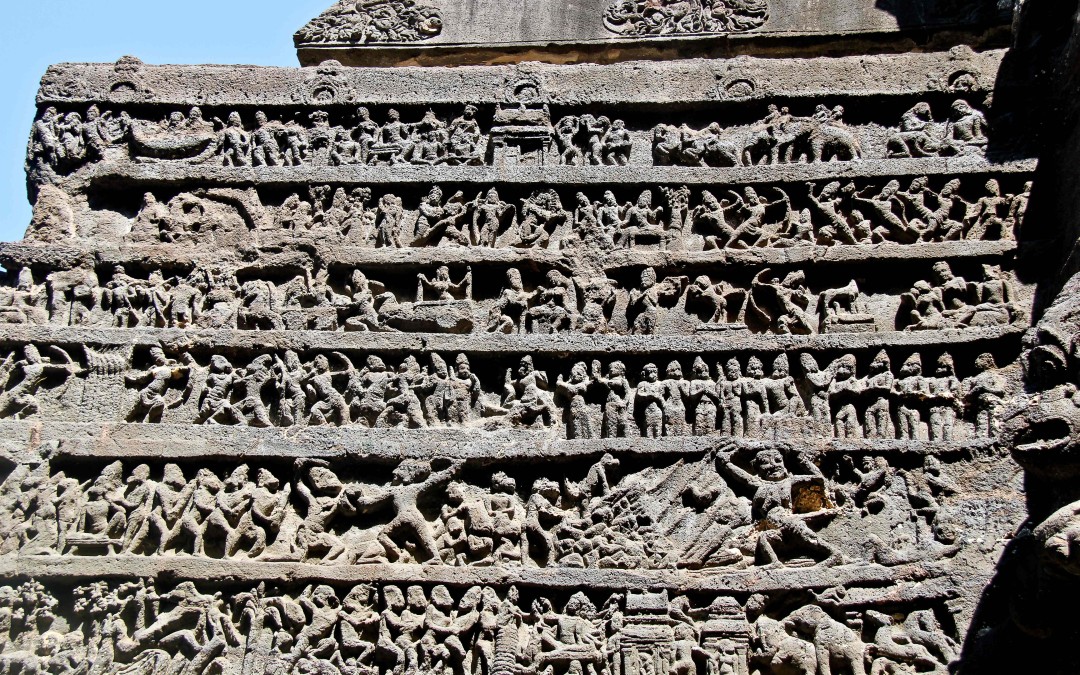Spent an outstanding weekend exploring the Ajanta and Ellora caves. The monuments outdid all expectations both in terms of their gorgeous paintings and sculptures, as well as the state that you find them in today. We’d had people tell us that they smell, have bats and more. The caves were incredibly clean – the main ones required that you take off your footwear before entering.
The walls of these caves are books with the panels of paintings and sculpture holding a wealth of stories in them. You hear the stories come alive as you walk around the cave and follow the actions and expressions of the people portrayed. The panel on the Mahabharta and Ramayana cut into stone row upon row read as an Amar Chitra Katha comic would without blurbs.
Ajanta is stunning with its location, detailed paintings and colours that have survived despite years of neglect and having been lost and forgotten in the forest. A Britisher named John Smith accidentally spotted them while out on a hunting trip in 1819.
The caves at Ellora, made almost a 1000 years after Ajanta are more ornate. The paintings have largely been destroyed – the caves had villagers living and cooking inside them for years. Despite that, what has survived is truly extraordinary. The Kailasa rock-cut temple, cut into the rock with not a single joint, defies all understanding of how they visualised and created it. Spread over 25000sft, it is the world’s largest rock-cut cave temple and is dedicated to Shiva. 
The acoustics in the Buddhist caves, where every chant reverberates through the hall and fills your senses, leaves you with an immense feeling of peace.
My kids enjoyed the visit and the drive from Aurangabad to Ajanta was two hours of history talk (my younger one claimed it kept her from feeling carsick). I hope that the place gets more visitors from across India and outside for it truly is a place worth experiencing.
In the meantime, I’m making notes for it has my head buzzing with an idea for another in my History-Mystery series at some stage!





